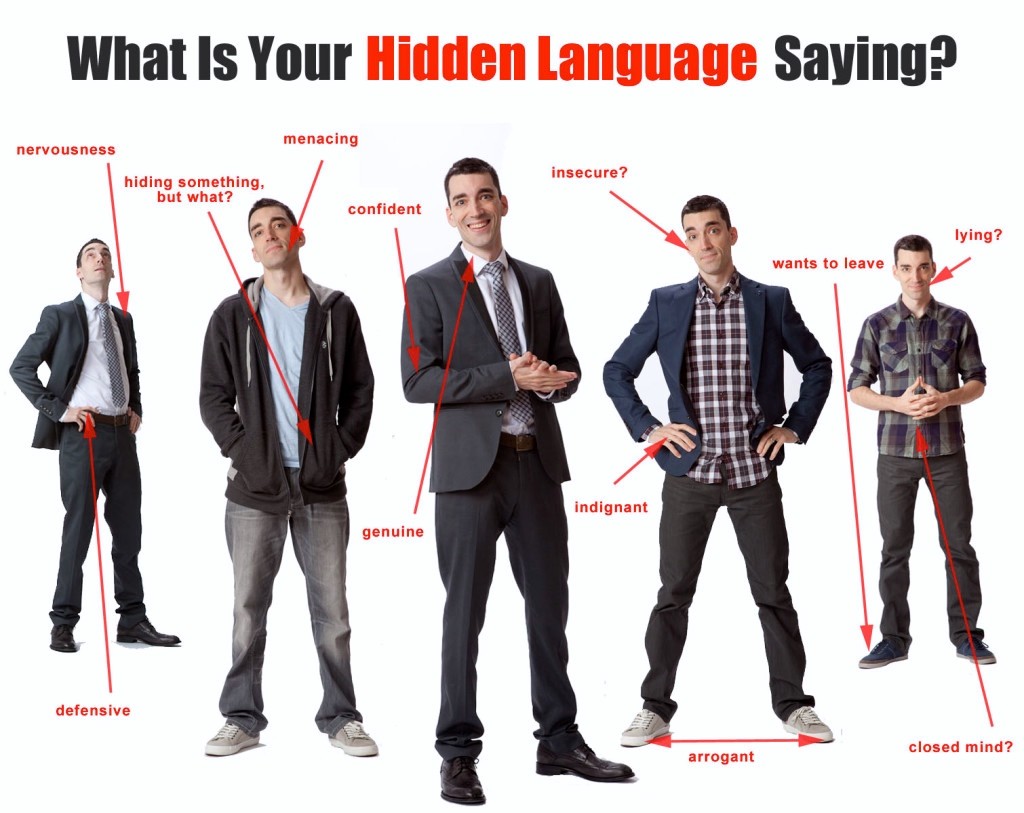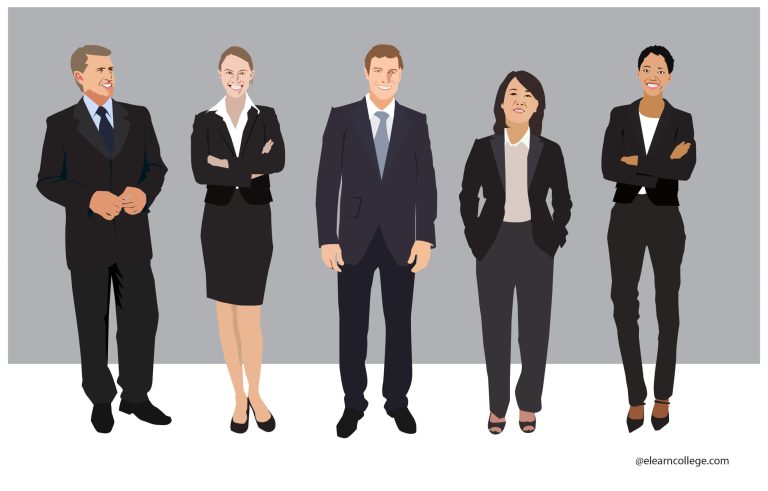Standing Body Language
Are you curious about how your body language can speak volumes even when you’re just standing there? Well, let’s dive into the fascinating world of standing body language and discover the hidden messages we convey without saying a word.
You might not realize it, but the way you stand can communicate confidence, power, and even your mood. Standing tall with your shoulders back signals self-assurance, while a slouched posture can indicate low confidence. So, let’s explore the different aspects of standing body language and the messages they convey.
Whether you’re in a social setting, at school, or even in a job interview, understanding standing body language can help you make a positive impression and navigate social interactions with confidence. So, let’s get ready to unlock the secrets behind standing body language and enhance the way we communicate without uttering a single word.
Mastering the Art of Nonverbal Communication: Body Language while Standing
Understanding and harnessing the power of body language can have a significant impact on your interactions. Standing body language, in particular, can convey confidence, authority, and openness. To improve your standing body language, follow these essential tips:
- Stand tall with your shoulders back
- Maintain eye contact
- Keep your arms relaxed and uncrossed
- Use open and confident gestures
- Show attentive and engaged facial expressions

Understanding the Power of Standing Body Language
Standing body language is a non-verbal form of communication that plays a crucial role in how we perceive and interact with others. Whether we realize it or not, our body language has the power to convey confidence, assertiveness, and approachability. In this article, we’ll delve into the intricacies of standing body language and how it can influence our personal and professional lives. By understanding how to read and use standing body language effectively, we can enhance our communication skills and establish stronger connections with those around us.
The Importance of Posture
Posture is a fundamental aspect of standing body language. How we hold ourselves while standing greatly influences how others perceive us and can even impact our own confidence levels. Good posture consists of aligning the head, shoulders, and hips in a straight line, with the feet shoulder-width apart. This alignment not only projects confidence but also promotes a healthy spine and reduces the risk of chronic pain.
In addition to physical health benefits, good posture communicates a sense of self-assuredness and professionalism. When we stand tall with our shoulders back and our chin held high, we appear more open and approachable to others. This can help to establish trust and build positive relationships in both personal and professional settings.
On the other hand, slouching or hunching over sends signals of insecurity and lack of confidence. It can also contribute to feelings of fatigue and low energy. By paying attention to our posture and making a conscious effort to stand tall, we can not only improve how others perceive us but also boost our own self-esteem.
Body Language Cues for Confidence
Confidence is an attractive quality that can greatly influence our success in various aspects of life. When it comes to standing body language, there are several cues we can employ to project confidence to those around us. These cues include open body positioning, strong and deliberate movements, and confident eye contact.
Open body positioning involves keeping the arms relaxed and uncrossed, with the palms facing forward. This conveys approachability and signals that we are receptive to conversation and connection. Additionally, standing with an open stance and facing the person we are interacting with demonstrates engagement and interest.
Strong and deliberate movements also play a role in projecting confidence through standing body language. Moving with purpose and intention indicates that we are in control and capable. Conversely, fidgeting or excessive movement can convey nervousness or lack of confidence. By minimizing unnecessary movements and adopting deliberate gestures, we can project a sense of self-assuredness.
Confident eye contact is another powerful tool in standing body language. Maintaining consistent eye contact during conversations shows that we are present and attentive. It conveys respect and interest in what the other person is saying. However, it’s important to strike a balance, as prolonged or intense eye contact can be perceived as aggressive or intimidating. A rule of thumb is to maintain eye contact for a few seconds before briefly redirecting your gaze.
The Impact of Body Language on Perception
Our standing body language not only influences how others perceive us but can also shape their overall impression of our character and personality. This can have a significant impact on personal and professional relationships as well as various social interactions.
Positive standing body language, such as confident posture, open positioning, and engaging eye contact, can make us appear more trustworthy, capable, and charismatic. Conversely, negative body language cues, such as crossed arms, closed-off postures, and a lack of eye contact, can give the impression of disinterest, insecurity, or even deception.
By being mindful of our standing body language and consciously making efforts to adopt positive cues, we can influence how others perceive us and create more favorable impressions. This can open doors to new opportunities, facilitate better communication, and foster stronger connections with the people we interact with.
Tips for Improving Your Standing Body Language
Now that we understand the impact of standing body language, let’s explore some practical tips and techniques for improving and harnessing the power of our non-verbal communication.
1. Practice Good Posture
Start by becoming more aware of your posture throughout the day. Make a conscious effort to align your head, shoulders, and hips in a straight line and stand tall. Regularly performing exercises to strengthen the core muscles can also help maintain good posture.
Additionally, consider incorporating activities such as yoga or pilates into your routine, as they can improve overall body awareness, flexibility, and posture.
By consistently practicing good posture, it will become second nature, leading to improved body language and increased confidence.
2. Observe and Mirror Others
Pay attention to the body language of confident and assertive individuals around you. Observe their posture, gestures, and eye contact. Then, try mirroring these cues in your own interactions.
Mirroring involves subtly imitating the body language of the person you are conversing with. This can help establish rapport and create a sense of connection. However, be mindful to keep it natural and avoid blatant copying, as it can come across as insincere.
By incorporating mirroring into your standing body language, you can build rapport and establish stronger connections with others.
3. Practice Power Poses
Power poses are expansive and open body positions that have been shown to increase feelings of confidence and reduce stress. These poses involve standing tall, taking up space, and adopting open postures.
Before significant events or interactions that require confidence, spend a few minutes practicing power poses. This can be as simple as standing with your feet planted firmly, hands on hips, and chin held high. By using power poses, you can quickly alter your mood and mindset, projecting confidence through your standing body language.
Understanding the Impact of Standing Body Language in Different Settings
Standing body language plays a significant role in various settings, from personal relationships to professional environments. Let’s explore how it can influence different aspects of our lives.
In the Workplace
Positive standing body language in the workplace can enhance your professional image and positively impact your career growth. It can convey leadership qualities, enhance your credibility, and increase your chances of being perceived as competent and capable.
By maintaining good posture, using open body positioning, and employing confident gestures, you can project an air of professionalism and gain the respect and trust of your colleagues and superiors. This can lead to more significant opportunities for career advancement and increased influence within your organization.
Additionally, paying attention to the body language of others can help you navigate office dynamics and establish better working relationships. Being mindful of non-verbal cues can provide insights into how others are feeling and allow you to respond appropriately with empathy and understanding.
In Social Settings
Standing body language also plays a vital role in social settings, influencing how we connect with others and form new relationships. Positive body language signals approachability, friendliness, and openness to conversation.
By adopting open stances, maintaining eye contact, and using friendly gestures, you can create an inviting presence and attract people to engage with you. This can be particularly valuable at social events, networking functions, and social gatherings where meeting new people is the goal.
Furthermore, being aware of your standing body language can also help you navigate social situations more effectively. By understanding how your body language affects others, you can adjust your cues to fit the context and create a more positive and comfortable atmosphere.
Key Takeaways: Standing Body Language
- Standing tall and straight portrays confidence and authority.
- Leaning forward shows interest and engagement in a conversation.
- Arms crossed indicates defensiveness or discomfort.
- A wide stance indicates dominance and assertiveness.
- Shifting weight from one foot to another may suggest nervousness.
Frequently Asked Questions
As humans, we communicate not only through words but also through body language. One significant aspect of body language is standing posture. In this section, we will delve into the questions surrounding standing body language and its implications in our daily lives.
1. How does standing body language affect how others perceive me?
The way we stand can convey a lot about our confidence, attitude, and even our level of interest. When we stand tall with our shoulders back and head held high, it exudes confidence and self-assurance, making others perceive us as more competent and approachable. On the other hand, slouching or crossing our arms can make us appear closed off, uninterested, or lacking confidence, which may hinder positive interactions.
By being mindful of our standing body language, we can project a more positive image, encourage better communication, and influence how others perceive us in various situations.
2. Can standing body language impact my own mindset and emotions?
Absolutely! Our body language not only sends signals to others, but it also affects our internal state. Adopting a strong and confident posture, such as standing with feet shoulder-width apart and hands on hips, can boost our feelings of power and reduce stress levels. This posture, known as the “power pose,” has been shown to increase testosterone levels and decrease cortisol, a stress hormone.
On the other hand, assuming a closed-off and hunched posture may make us feel more anxious and less assertive. By being aware of our standing body language and consciously choosing to adopt a more open and confident posture, we can positively influence our mindset, emotions, and overall well-being.
3. How can I improve my standing body language?
Improving your standing body language starts with awareness. Begin by paying attention to your posture throughout the day. Practice standing tall with your shoulders relaxed and your weight evenly distributed on both feet. Imagine a string pulling you upward from the crown of your head.
Incorporate exercises that strengthen your core and back muscles to improve your overall posture. Yoga and Pilates can be particularly beneficial in developing body awareness and enhancing your standing body language. Finally, find ways to manage stress and reduce tension, as this can also impact your posture and body language.
4. Are there cultural differences in standing body language?
Indeed, standing body language can vary across different cultures. While some universal principles may apply, such as standing tall to convey confidence, specific gestures or postures can carry different meanings in various cultural contexts. For example, in some cultures, crossing your arms while standing may indicate attentiveness, while in others, it can suggest defensiveness or disagreement.
If you are in a multicultural setting or interacting with people from different cultures, it is essential to be sensitive to these variations and adapt your standing body language accordingly. Pay attention to nonverbal cues from others and be respectful of cultural norms to foster effective communication.
5. Can standing body language impact my professional life?
Absolutely! Standing body language plays a crucial role in professional settings. When you project confident and open body language, it can enhance your credibility and help you build positive relationships with colleagues and superiors. Employers often value employees who exhibit strong standing body language, perceiving them as reliable, self-assured, and capable.
Moreover, standing with good posture during presentations or meetings can exude confidence and captivate the attention of your audience. By making a conscious effort to improve your standing body language, you can make a positive impact on your professional life and enhance your overall success in the workplace.

Body Language Hack To Look More Relaxed & Confident
Summary
When it comes to body language, how we stand says a lot about us. Standing tall and straight can make us feel more confident and powerful. On the other hand, slouching can make us look weak and uninterested. It’s important to be aware of our posture and make an effort to stand with our shoulders back and our head held high to convey a positive image.
Additionally, our body language can also affect how others perceive us. Standing with an open stance, with our arms uncrossed and our feet shoulder-width apart, can make us appear more approachable and friendly. Conversely, crossing our arms or standing with our feet close together can create a barrier and make us seem defensive or unapproachable. By being mindful of our standing body language, we can make a better impression on others and communicate more effectively.

